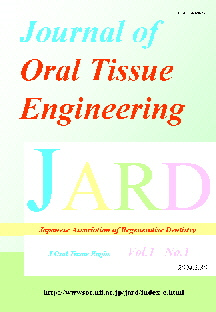Volume 13, Issue 3
Displaying 1-5 of 5 articles from this issue
- |<
- <
- 1
- >
- >|
ORIGINAL ARTICLES
-
Article type: ORIGINAL ARTICLE
2016 Volume 13 Issue 3 Pages 110-116
Published: 2016
Released on J-STAGE: May 07, 2016
Download PDF (674K) -
Article type: ORIGINAL ARTICLE
2016 Volume 13 Issue 3 Pages 117-124
Published: 2016
Released on J-STAGE: May 07, 2016
Download PDF (807K) -
Article type: ORIGINAL ARTICLE
2015 Volume 13 Issue 3 Pages 125-130
Published: 2015
Released on J-STAGE: May 07, 2016
Download PDF (1277K) -
Article type: ORIGINAL ARTICLE
2016 Volume 13 Issue 3 Pages 131-135
Published: 2016
Released on J-STAGE: May 07, 2016
Download PDF (229K) -
Article type: ORIGINAL ARTICLE
2015 Volume 13 Issue 3 Pages 136-144
Published: 2015
Released on J-STAGE: May 07, 2016
Download PDF (767K)
- |<
- <
- 1
- >
- >|
